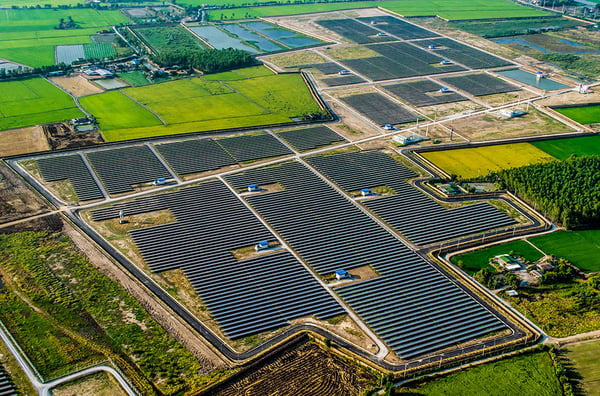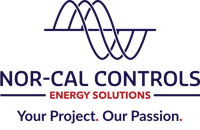Part 2
Advanced analytics are used across many industries, including solar, to inform decisions, reduce costs and improve efficiency.
Steve Hanawalt is one of the founders of Power Factors and a subject matter expert on solar performance analytics. Power Factors provides a real-time asset performance management software platform called Drive for the renewable power industry.
We asked Steve to share how utilizing solar performance analytics can reduce operational costs and improve energy productivity. This is Part 2 of a two-part blog series from Steve.
In Part 1, we covered analytics basics, loss characterization analysis and data validation. Now let’s cover automation, workflows, and the benefits of a performance management platform for asset owners, operators, and O&M providers, and EPCs.
How can you optimize performance and cost savings at a solar facility by using analytics?
Better performance is good, but spending a million dollars on improvements in order to capture an additional thousand dollars of revenue from improved performance makes no sense. No one wants to spend to make money only to end up spending more than they make. Advanced analytics gives asset owners and operators the information needed to make strategic decisions and allocate their resources efficiently. That’s the cost savings side.
Automation Reduces Labor Costs and Streamlines Workflows
In the solar power industry, labor is by far the largest contributor to operating costs. Labor makes up roughly 80% of the cost of operating and maintaining a solar power plant. To reduce the cost of running a solar plant in a significant way, labor is the place to start.
Performance analytics and asset management software like Drive takes SCADA data and applies an intelligence layer that automates many of the manual and labor-intensive data tasks associated with managing renewable assets, enabling fewer people to manage more assets.
Without a solution like Drive, operators sit in front of monitoring screens and wait for something to happen. When an alarm goes off, they manually investigate that alarm to figure out what’s going on. Then they must go into the work order system to write and send a work order to the O&M operator. Then that O&M operator must find and dispatch the right person with the right tools, equipment and skill set to go into the field and fix the problem. In this example, let’s say they go out and restart a tripped inverter.
This process or flow of events is called a workflow. Drive automates these workflows, greatly reducing the manual labor needed. Because it has all of the context described in Part 1, Drive automatically detects a SCADA alert and turns it into an intelligent contextualized event that allows for the quick cost-against-revenue assessment of restoring that inverter.
Within about three seconds of the inverter tripping, the software issues a work order to the field service organization that shows up on the contact’s phone. It provides the type of failure, where it failed, the parts needed and so on. It automatically takes into account the parameters of the O&M contract and the cost of power. So, in about three seconds, Drive delivers an automated work order, saving you all of the time and money you would have spent on a manual corrective maintenance work order workflow.
Automation Increases the Megawatt-Per-Person Ratio
Because the labor component of fossil power is very small compared to solar, the fossil power industry can afford to have many people sitting around waiting for the next problem to occur. Since, in solar, labor is the largest contributor to operating costs—and since we’re trying to lower the levelized cost of energy (LCOE) and make renewables a leading power source globally—a new service delivery model is needed.

Automation dramatically increases monitoring technicians’ ability to effectively and efficiently monitor a large number of renewable assets. By utilizing intelligent event detection and centralized SCADA alert data, the megawatts each tech can manage goes way up. Instead of having one technician to monitor the SCADA screen at each plant, one person can monitor 100 plants, or more.
What other ways do owners benefit from an asset management/performance analytics platform such as Power Factors Drive?
Solar performance analytics give asset owners—who have an equity stake in optimizing the economic performance of their facilities—a basis for better decision-making.
Power Factors’ Drive software seamlessly integrates with other business applications—financial systems, field service management systems, market pricing data, market weather data, and so on—so owners have the big-picture information they need to make the best operational and business decisions. One unified and extensible platform enables owners to prioritize issues based on business impact.
How do O&M providers benefit from a performance management platform? How do solar analytics help de-risk operations?
O&M service providers benefit from more efficient operations, better energy production, and compliance around their energy contracts.
This last point is important. Increasingly, O&M contracts come with service level agreements or service response requirements with stiff penalties for non-compliance. It's near-impossible for O&M contractors to remember every term and condition of every contract they have with every owner. Drive de-risks this situation for O&M providers, by keeping contracts in one place and tying them to assets.
Our system can automatically detect different plant anomalies like equipment going offline or some sort of emergency condition in the equipment, cross-check that against the O&M contract terms, and say, “Oh, your inverter just had an unplanned forced outage. This contract says you must notify the owner within one hour of such occurrence, have a plan of action ready for the owner to review within eight hours, and have an onsite response for this equipment for salvage within 24 hours. And if you don't do that, we're going to penalize you $1,000 an hour for every hour that you're out of compliance with the service level agreements."
Not only does Drive help O&M providers comply with the service level agreements of their contracts, it helps them understand where the performance anomalies are so they can optimally perform maintenance.
Here’s one simple example. Let’s say you’re trying to decide if it’s economical to do a truck roll to recover some performance from an underperforming piece of equipment. Drive helps you quickly ascertain that, since you have planned maintenance coming up in two weeks, it’s more economical to combine this corrective maintenance work order with the planned maintenance work order and take a look at the underperforming piece of equipment in two weeks.
Can EPCs benefit from an asset management/performance analytics platform such as Power Factors Drive?
Engineering, procurement and construction (EPC) contractors benefit in two indirect but important ways.
EPCs are the ones who specify the asset management and monitoring system and SCADA. If they integrate a best-in-class technical asset performance management platform, word gets around to owners and they become known for high-quality, high-performing facilities that generate more profit. Like everybody else in this industry, EPCs get future business based on past referrals and a good reputation. That’s benefit number one.
The second is warranty risk management. EPC contractors, like the equipment suppliers, must have a warranty agreement for their power plants to demonstrate their quality. That means they carry risk into the operational phase of the plants—typically between one and five years. During that time, for the typical plant, EPCs carry millions of dollars of risk for equipment failure, under-performance and even business interruption or lost revenue, since some EPCs also guarantee the plant revenue for the first year or two.
A top-quality asset performance management platform helps EPCs mitigate that risk. More issues will be detected before they become a problem, which means fewer things falling back on the EPC that they have to repair and replace.
What is the benefit of this software to the solar industry on the whole?
Currently, solar power isn’t the most cost-effective power generation source, and that largely has to do with the operating cost of solar being higher than gas-fired power plants. As mentioned earlier, 80% of solar operating costs can be attributed to labor. Because of this, if we’re really going to impact the decarbonization of the world's energy electric infrastructure, we have to figure out ways to dramatically reduce that percentage.
At Power Factors, we feel strongly that this will come from automation and the application of robotic technology. Robots can go out into the field and clean a panel or inspect a site—tasks only humans could do as recently as a year ago. Technology allows us to do things much more intelligently. Let’s use it! That’s why humans first invented the wheel after all—because it was heavy lugging things around on our backs.
Put advanced analytics and automation to work for you
Nor-Cal Controls and Power Factors work together to create SCADA asset performance management platforms that improve productivity and reduce operational costs. If you’re interested in working with us for your solar PV project, schedule a call or send a message today.


